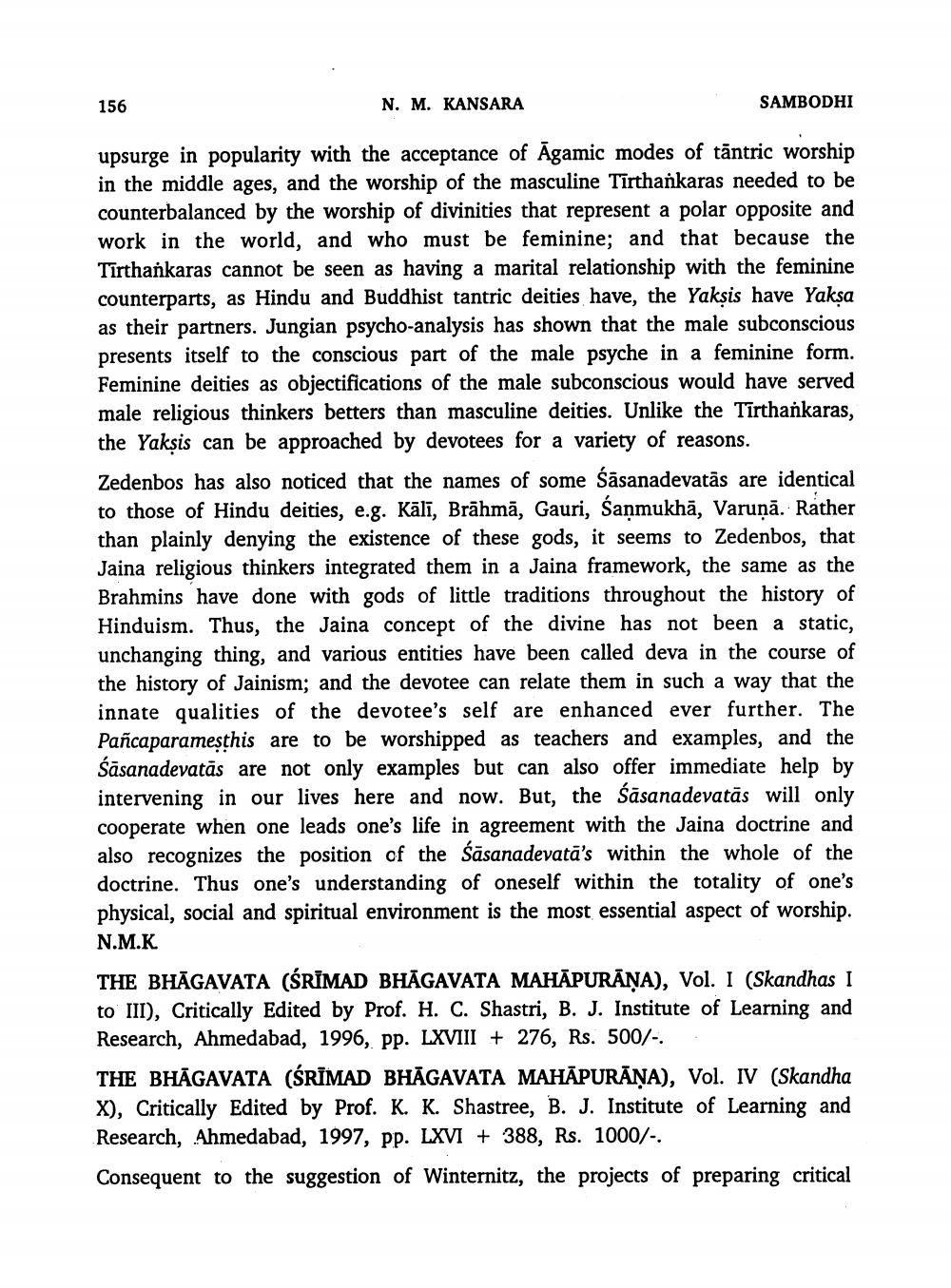________________
156
N. M. KANSARA
SAMBODHI
upsurge in popularity with the acceptance of Agamic modes of tāntric worship in the middle ages, and the worship of the masculine Tirthankaras needed to be counterbalanced by the worship of divinities that represent a polar opposite and work in the world, and who must be feminine; and that because the Tirthankaras cannot be seen as having a marital relationship with the feminine counterparts, as Hindu and Buddhist tantric deities have, the Yakṣis have Yakşa as their partners. Jungian psycho-analysis has shown that the male subconscious presents itself to the conscious part of the male psyche in a feminine form. Feminine deities as objectifications of the male subconscious would have served male religious thinkers betters than masculine deities. Unlike the Tirthankaras, the Yaksis can be approached by devotees for a variety of reasons. Zedenbos has also noticed that the names of some Śāsanadevatās are identical to those of Hindu deities, e.g. Kālī, Brāhmā, Gauri, Sanmukhā, Varunā. Rather than plainly denying the existence of these gods, it seems to Zedenbos, that Jaina religious thinkers integrated them in a Jaina framework, the same as the Brahmins have done with gods of little traditions throughout the history of Hinduism. Thus, the Jaina concept of the divine has not been a static, unchanging thing, and various entities have been called deva in the course of the history of Jainism; and the devotee can relate them in such a way that the innate qualities of the devotee's self are enhanced ever further. The Pañcaparamesthis are to be worshipped as teachers and examples, and the Śāsanadevatās are not only examples but can also offer immediate help by intervening in our lives here and now. But, the Śāsanadevatās will only cooperate when one leads one's life in agreement with the Jaina doctrine and also recognizes the position of the Śāsanadevatā's within the whole of the doctrine. Thus one's understanding of oneself within the totality of one's physical, social and spiritual environment is the most essential aspect of worship. N.M.K THE BHĀGAVATA (ŚRĪMAD BHĀGAVATA MAHĀPURĀŅA), Vol. I (Skandhas I to III), Critically Edited by Prof. H. C. Shastri, B. J. Institute of Learning and Research, Ahmedabad, 1996, pp. LXVIII + 276, Rs. 500/-. THE BHĀGAVATA (ŚRĪMAD BHĀGAVATA MAHĀPURĀŅA), Vol. IV (Skandha x), Critically Edited by Prof. K. K. Shastree, B. J. Institute of Learning and Research, Ahmedabad, 1997, pp. LXVI + 388, Rs. 1000/-. Consequent to the suggestion of Winternitz, the projects of preparing critical




